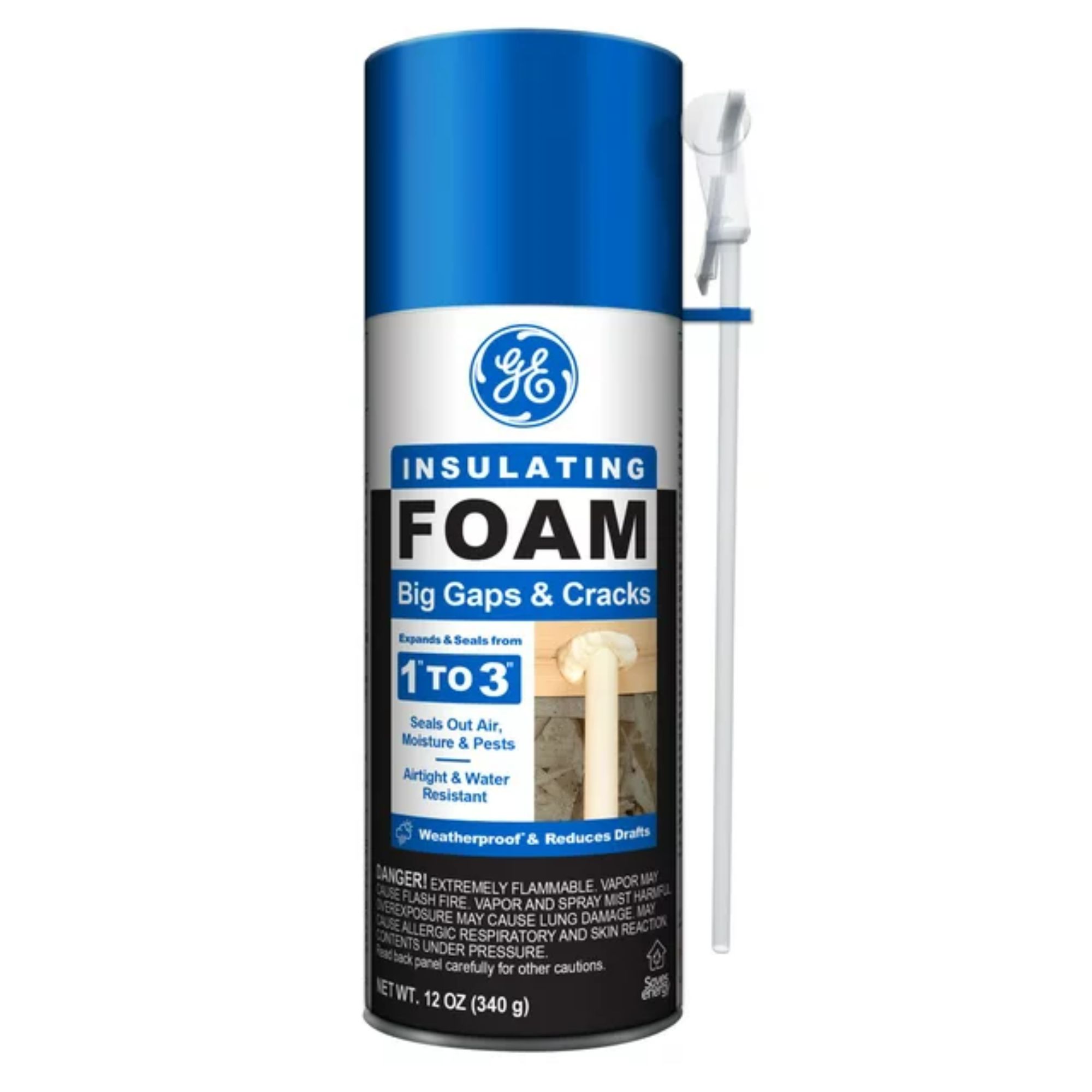How to get rid of birds in an attic – 6 safe and humane steps from experts
Use these expert tips for the swift removal of birds in your attic – simple exclusion and prevention techniques
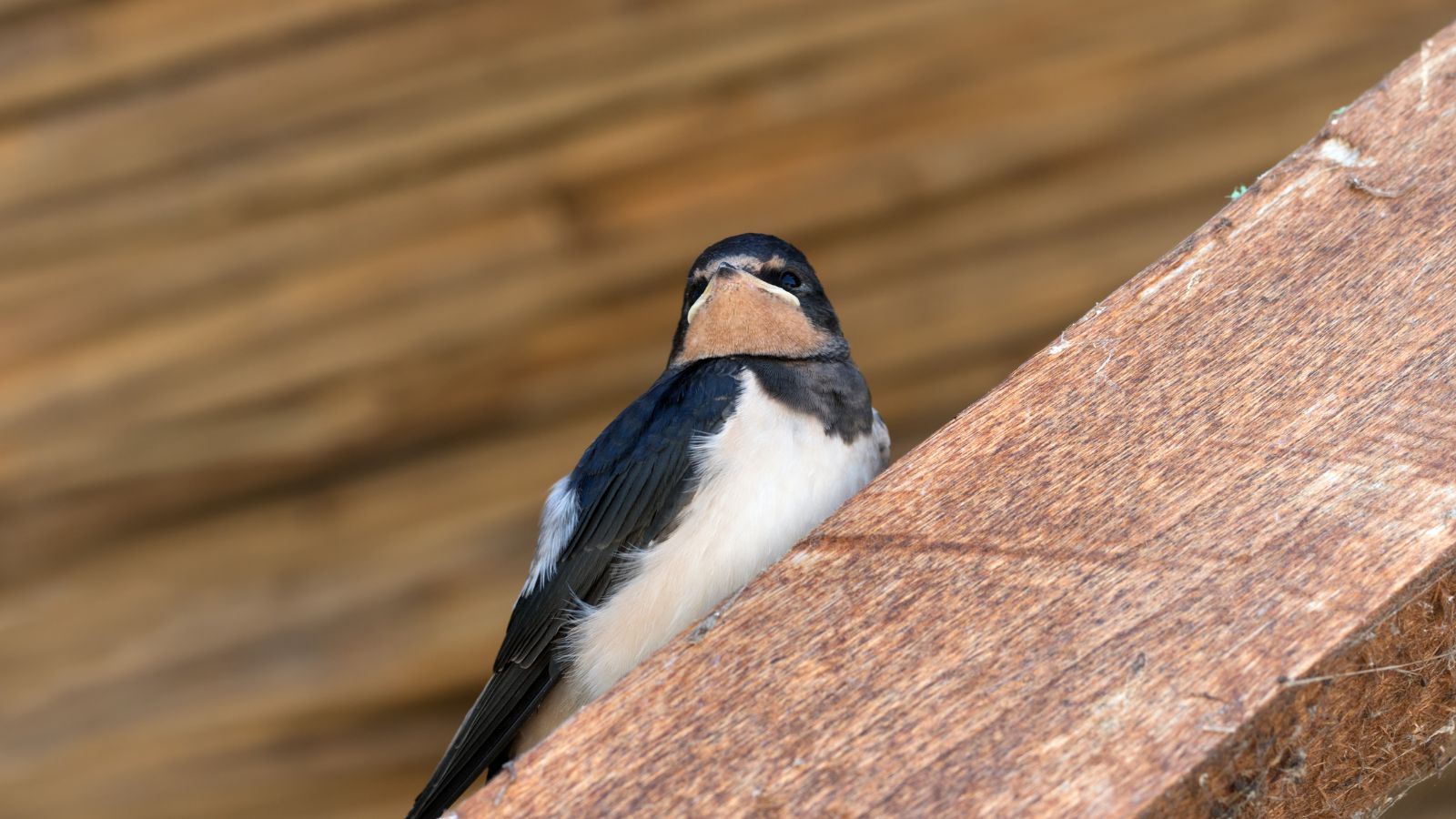

Having birds in your attic can lead to a host of problems – ranging from property damage to health hazards, plus bird infestations can attract other pests – so acting quickly to implement proper removal techniques and preventative measures is a no-brainer.
Removing birds from the attic might seem daunting. Not only do you want to avoid harming them, but they can also be more evasive than some other pests you might find in an attic. However, this process can be much simpler than you initially thought. Like getting rid of bats in the attic, the key is eviction and prevention.
Whether you want to get rid of pigeons or any other type of bird, following this to-do list can help you reclaim your attic and keep nosy feathered friends out of your hair – and out of your roof.
How to get rid of birds in an attic
'When dealing with birds in the attic, it is important to understand there are many federal, state, and local wildlife protection laws that protect most bird species,' says Meg Pearson, training manager at Critter Control. 'While species like European Starlings, Pigeons, and House sparrows are the only birds not protected by the Migratory Bird Act, ensuring compliance with regulations is essential.
'Depending on the species and location of nests, bird control services vary and can include visual and auditory deterrents or anti-roosting devices. Additionally, before you try any eviction tactics, check the attic for chicks. If there are baby birds, you’ll have to wait until they grow up (fledge) to evict the parent birds, or the babies will starve.'
It's important to check these regulations before using these methods to get rid of birds, and when in doubt, we advise hiring professional wildlife removers who can handle and relocate birds safely.
1. Locate the entry points

First, try to locate the entry points the birds have been using to get in and out of your attic. Walk around the outside of your house looking for any openings that birds may be entering the attic through – holes in the roof, a gap in the vents, etc.
These are important to find since you will need to shoo birds out of these, and once you have removed them from your attic, seal them up to prevent them from taking up residence in your attic in the future.
2. Use the one-way door trick
One-way doors are an effective solution for evicting birds from attics or vents while preventing their return. These specialized devices consist of a door or flap that allows birds to exit freely but doesn't allow them to get back in. These should be strategically installed over the birds' entry point.
'This method capitalizes on the birds' natural instincts to exit their roosting area, making it a humane exclusion method,' explains Meg Pearson. 'However, it's essential to ensure that no chicks are present in the nest before installing the one-way door – hatchlings can’t fly out on their own.'
Rhino Excluders® Bird One Way Exclusion Door - BIRDCHUTE | $21.99 from Amazon
If you are 100% sure there are no fledglings present, these contraptions are extremely useful for evicting birds in the attic.
3. Make your roof undesirable for them to stay
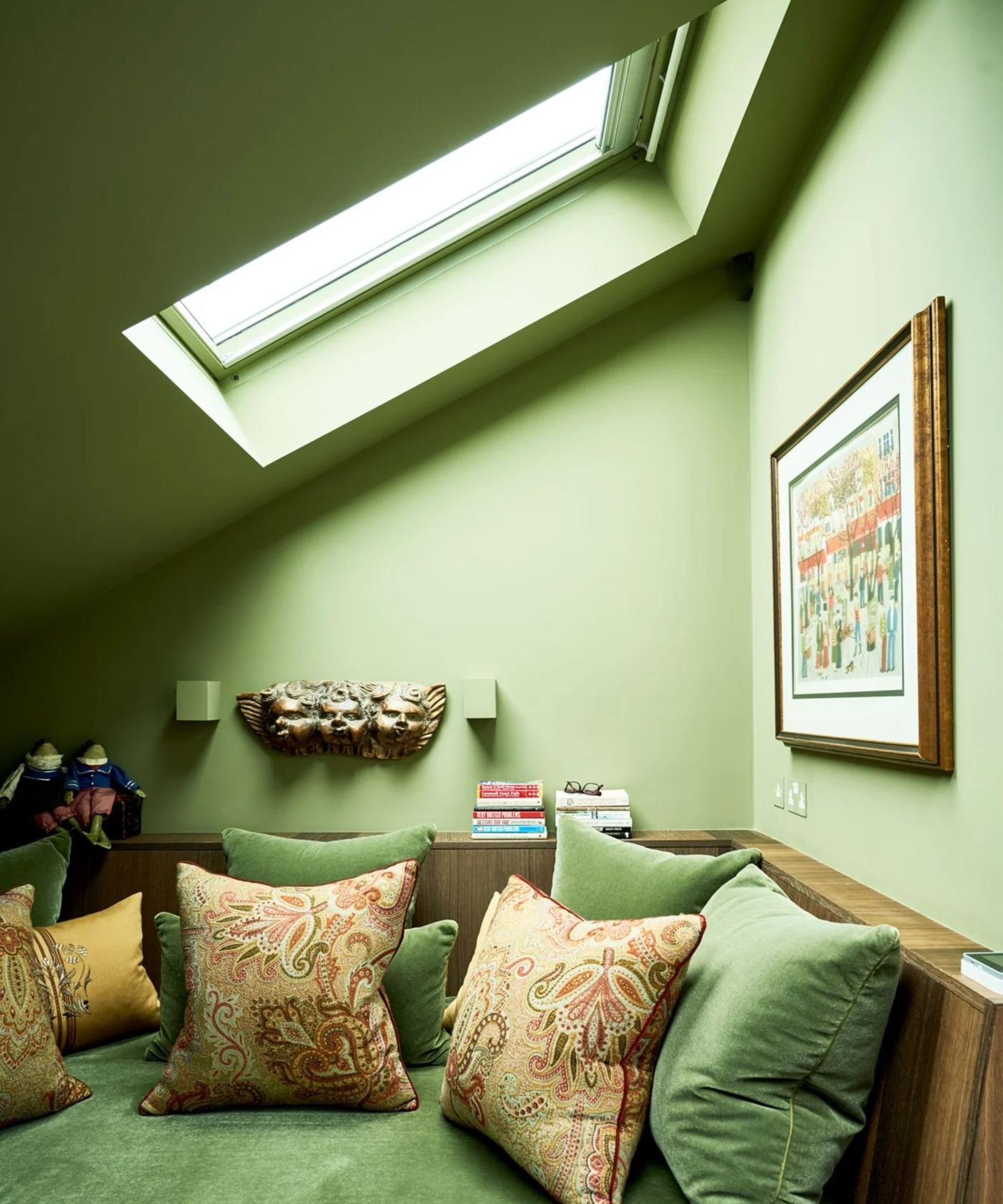
The cleverly named scarecrow trick involves making the attic a less attractive place for birds to encourage them to vacate.
To do this, you can install high-frequency sound devices or visual deterrents to further discourage birds from nesting in your attic. Joshua Riutta, owner of Mikku and Sons Roofing recommends: 'Play loud noises (we use radios left on playing recordings of predator calls, which scare birds very effectively); set up bright strobe lights on timers; hang shiny mylar balloons – anything to startle them enough to encourage them to go somewhere a bit calmer to nest.'
Professional Grade Avian Deterrent | $34.95 from Walmart
This reflective wildlife deterrent uses motion and bright flashing to scare away birds from unwanted areas like your roof.
4. Get professionals to use a live trap
If the one-way door and deterrent methods don't do the trick, it's time to call in the pros to trap and remove any birds.
Using one-way funnel live traps baited with birdseed can be an effective method of capturing birds in need of relocation. However, it's crucial to approach this technique with care and consideration for the well-being of the birds. This method is best left to the professionals.
'The bird will not be too pleased to be trapped, and you’ll need to check the trap frequently to release the bird promptly, as traps can be stressful for them,' says Joshua Riutta.
'It's important to note that using traps to catch wildlife may be subject to legal regulations in certain areas. Before proceeding with this method, check your local laws and regulations.'
5. Remove empty nests
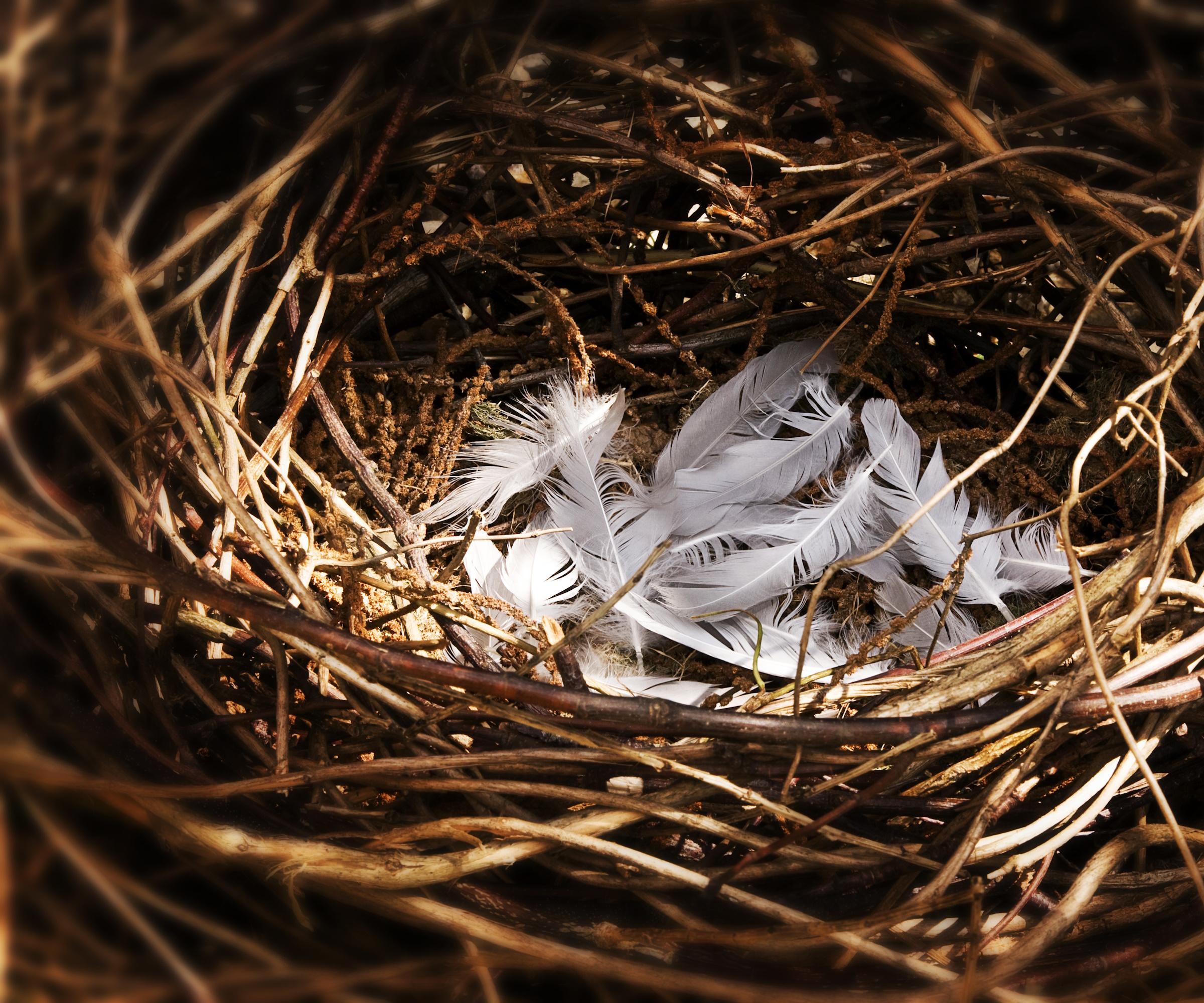
The final step in the removal process is discarding of any empty bird nests. It's important to wear protective gear such as gloves and a mask while doing this to avoid contact with potential contaminants.
Dispose of the nest in a sealed plastic bag and place it in an outdoor trash can. Again, you must not take a nest that has chicks or eggs, as this is not only inhumane but also illegal.
After removing the nest, thoroughly clean and sanitize the area to eliminate any remaining debris or droppings.
6. Bird-proof your attic
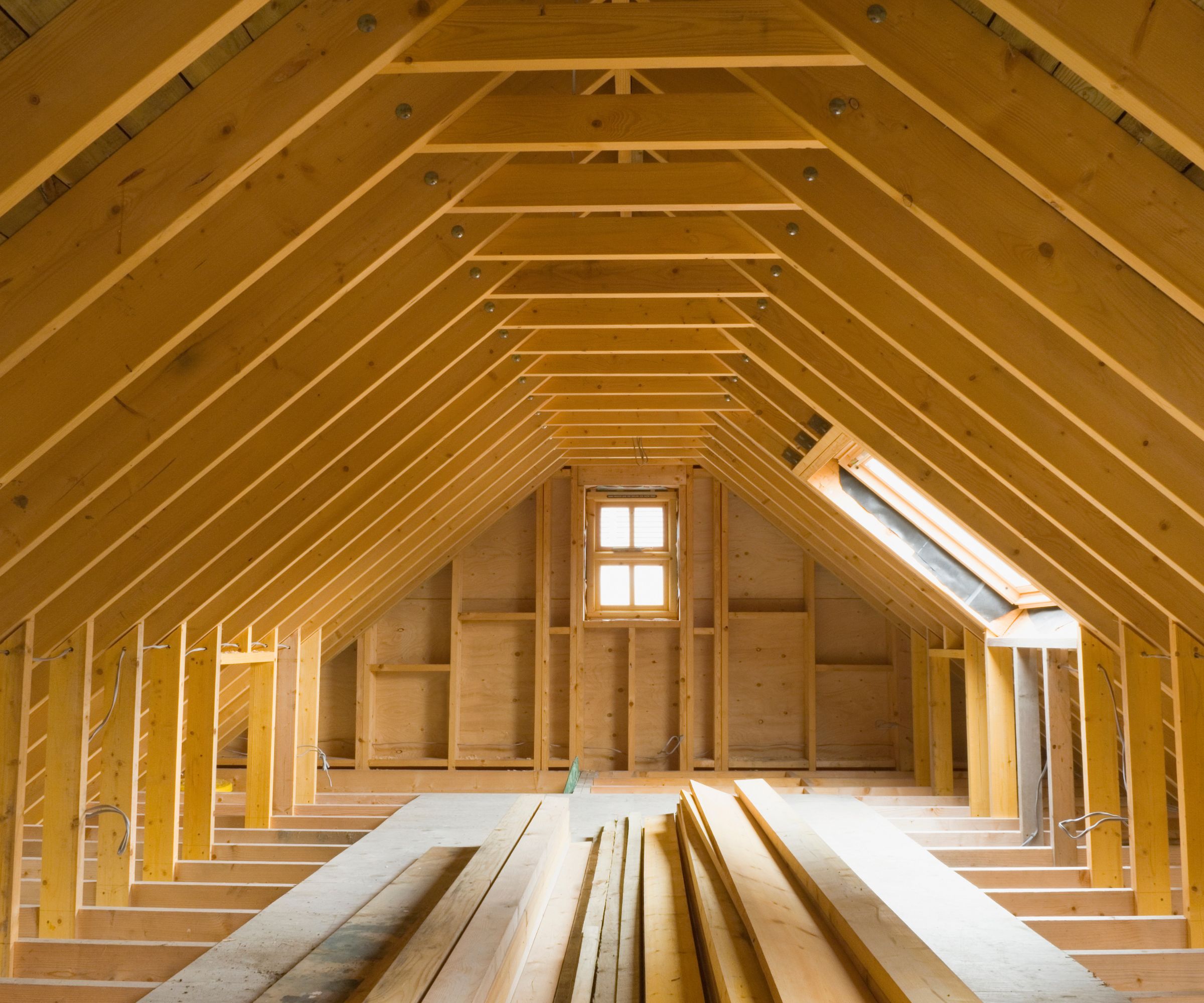
Once the birds are gone, you need to make sure they don't come back by sealing up all potential entry points and implementing further deterrents.
Seal entry points
'A common cause for bird entry is inadequate or damaged roofing components, making the attic an accessible nesting spot,' explains Justin Whittaker, roofing expert at Reliable Window and Sliding.
'To effectively prevent birds from nesting, incorporate wildlife-proofing as part of your roofing strategy. This includes installing proper vents and screens that allow for air circulation without letting birds through. Repairing the physical structure helps in ensuring that birds do not return.'
In most cases, the birds get into the attic from openings along the roof line, soffits, attic vents, or damaged sidings.
- Soffit vents: These are just below the eaves. Look for gaps or loose boards that birds can worm their way through.
- Fascia boards: These run along the roof edge, and can sometimes have the odd gap where a bird can get in.
Inspect around pipes, chimneys, and where the roof meets the walls for any holes, broken tiles, loose shingles, or unsealed joints, which are potential entry points for birds. Once access points are located, seal them by covering them with exclusion methods or physical barriers to keep the birds out. Some of these include:
- Hardware cloth: This is a strong, metal mesh that's perfect for covering larger openings.
- Caulking: Use a good quality, exterior-grade caulk to seal small cracks and gaps.
- Expanding foam: This is a spray foam that can fill larger holes, but use sparingly – it expands a lot.
Use deterrents
- Install bird spikes, such as these from Walmart, or netting to deter birds from hanging around or nesting on your premises.
- Prune any tree branches that allow easy access to your roof, making it less inviting for birds to roost or nest.
- Employ visual deterrents such as decoy predators, reflective objects, or auditory devices that emit sounds unpleasant to birds.
- Don’t allow your attic to collect dust-balls. Birds often nest in dirty attics that are filled with trash.
'Like all wild animals, birds can easily spread and carry disease, so it’s important to not only safely remove the animal(s) but sanitize the space as well for the safety of the occupants,' says Meg Pearson.
Periodically check your attic and the exterior of your home to ensure that birds are not reclaiming space and that new entry points are properly sealed. Regular maintenance and vigilant inspections play a vital role in keeping your attic bird-free and maintaining the overall integrity of your roofing system.
Sign up to the Homes & Gardens newsletter
Design expertise in your inbox – from inspiring decorating ideas and beautiful celebrity homes to practical gardening advice and shopping round-ups.

Lola Houlton is a news writer for Homes & Gardens. She has been writing content for Future PLC for the past six years, in particular Homes & Gardens, Real Homes and GardeningEtc. She writes on a broad range of subjects, including practical household advice, recipe articles, and product reviews, working closely with experts in their fields to cover everything from heating to home organization through to house plants. Lola is a graduate, who completed her degree in Psychology at the University of Sussex. She has also spent some time working at the BBC.
-
 How to clean a patio – 6 different methods, and when you must use a chemical cleaning agent
How to clean a patio – 6 different methods, and when you must use a chemical cleaning agentFrom manual scrubbing, natural solutions or calling in the pros, industry experts reveal the benefits and considerations of each method
By Andy van Terheyden Published
-
 Kris Jenner's favorite air fryer, the Ninja Crispi, is the perfect small kitchen solution – it deserves a place on the most compact of countertops
Kris Jenner's favorite air fryer, the Ninja Crispi, is the perfect small kitchen solution – it deserves a place on the most compact of countertopsKris approves of this compact yet powerful air fryer, and so do our own kitchen appliance experts, praising it for its multifunctionality
By Hannah Ziegler Published




